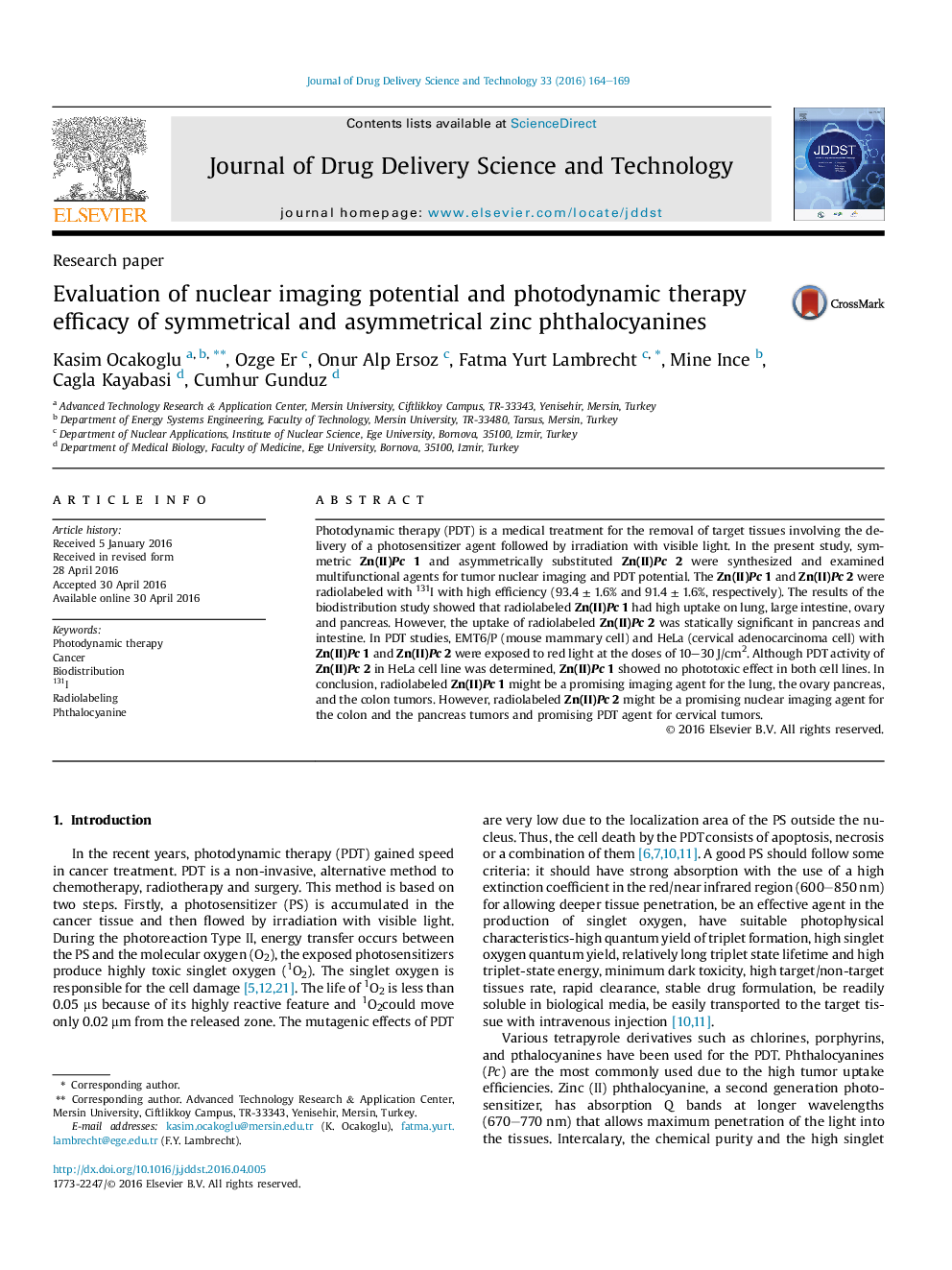| Article ID | Journal | Published Year | Pages | File Type |
|---|---|---|---|---|
| 2483146 | Journal of Drug Delivery Science and Technology | 2016 | 6 Pages |
Photodynamic therapy (PDT) is a medical treatment for the removal of target tissues involving the delivery of a photosensitizer agent followed by irradiation with visible light. In the present study, symmetric Zn(II)Pc 1 and asymmetrically substituted Zn(II)Pc 2 were synthesized and examined multifunctional agents for tumor nuclear imaging and PDT potential. The Zn(II)Pc 1 and Zn(II)Pc 2 were radiolabeled with 131I with high efficiency (93.4 ± 1.6% and 91.4 ± 1.6%, respectively). The results of the biodistribution study showed that radiolabeled Zn(II)Pc 1 had high uptake on lung, large intestine, ovary and pancreas. However, the uptake of radiolabeled Zn(II)Pc 2 was statically significant in pancreas and intestine. In PDT studies, EMT6/P (mouse mammary cell) and HeLa (cervical adenocarcinoma cell) with Zn(II)Pc 1 and Zn(II)Pc 2 were exposed to red light at the doses of 10–30 J/cm2. Although PDT activity of Zn(II)Pc 2 in HeLa cell line was determined, Zn(II)Pc 1 showed no phototoxic effect in both cell lines. In conclusion, radiolabeled Zn(II)Pc 1 might be a promising imaging agent for the lung, the ovary pancreas, and the colon tumors. However, radiolabeled Zn(II)Pc 2 might be a promising nuclear imaging agent for the colon and the pancreas tumors and promising PDT agent for cervical tumors.
Graphical abstractFigure optionsDownload full-size imageDownload as PowerPoint slide
